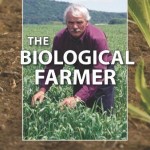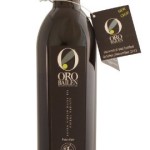
[amzn_product_post]
Read More →
Complex, Intense Green Fruity with aromas of tomato vine- characteristic of the picual olive- apple, green grass, green banana and green almond with a very well balance taste: sweet at the beginning with a green, fresh, peppery taste in its final phase.
Oro Bailen Family Reserve olive oil is produced from 2 Family Estates: “Los Juncales” y “La Casa del Agua” in Villanueva de la Reina, Jaen, Spain. The Estates are situated at the foot of the Sierra Morena mountains, 400 mts.above seal level, and enjoys excellent weather conditions. The “Terroir” is affected by the Guadalquivir river valley that allows for abundant rains during the Spring and Autumn seasons with an average annual temperature oscillating between 16? C and 18? C. With the benefits of this optimal climate, Oro Bailen, takes care of its grove by using irrigation techniques that allow the trees to grow with minimum stress to produce fragrant fruits full of flavor. “Reserva Familiar” represents the best Extra Virgin Olive Oils from Oro Bailen.
Harvested Pre-Envero in early Autumn 2011 to maximize the content of antioxidants and other health promoting nutrients.
To conserve the health promoting compounds best used cold: dippings, salad dressings or just added cold to a hot dish at the time of serving.
Read More →
• Expert advice on how to grow a lush, green lawn through proper watering with less fuss, less water, and less money.
• Easy-to-follow, practical format helps you plan your watering systems, buy the right equipment, and install them with 100% confidence. • More than 100 full-color photos and illustrations combined with step-by-step instructions show how easy it is to install sprinkler and drip systems.
Read More →
This book was converted from its physical edition to the digital format by a community of volunteers. You may find it for free on the web. Purchase of the Kindle edition includes wireless delivery.
Read More →![Farmland birds and resource protection in the UK: Cross-cutting solutions for multi-functional farming? [An article from: Biological Conservation]](https://agricultureadvice.com/wp-content/uploads/2014/12/51P1T5EY1VL-150x150.jpg)
This digital document is a journal article from Biological Conservation, published by Elsevier in 2006. The article is delivered in HTML format and is available in your Amazon.com Media Library immediately after purchase. You can view it with any web browser.
Description:
Farmland bird declines in Europe are well documented. In the UK, agri-environment schemes are key mechanisms for reversing the declines of birds and other farmland biodiversity, but recent reviews suggest that wet habitats might be a gap in provision by these schemes. Important resources provided by wet habitats include: (i) damp soil, for probing species; (ii) permanent water to provide water-dependent invertebrates, as a source of food; (iii) bare or sparsely vegetated ground in the draw-down zone, to improve access to food; (iv) rank emergent vegetation for nesting. However, wet habitats have been lost from farmland as a result of loss of ponds and filling of ditches, as well as the effective removal of water from fields by surface run-off, itself affected by soil compaction, and extensive under-field drainage. The efficient removal of water from fields can cause problems downstream, both through flooding, and diffuse pollution. Regular farmland pollutants include pesticides, nitrogen, phosphorus and sediment, leading to environmental problems such as eutrophication and reduced quality of drinking water. Major new political instruments, such as the Water Framework Directive, will aim to reduce the impact of this diffuse pollution from agriculture. A variety of solutions to diffuse pollution, such as conservation tillage, buffer strips at field edges, and small constructed wetlands, could simultaneously provide some of the resources required by farmland birds. We suggest that future agri-environment schemes, to be truly multifunctional, could focus on bringing these diverse objectives together.